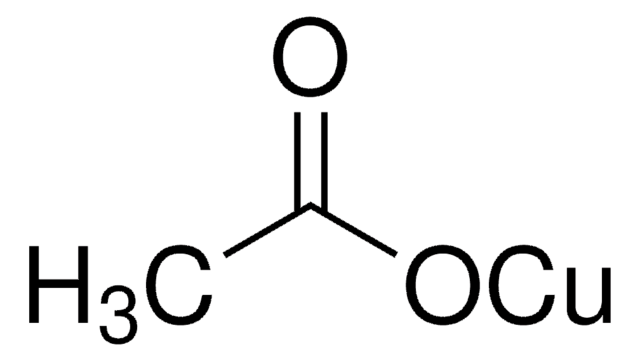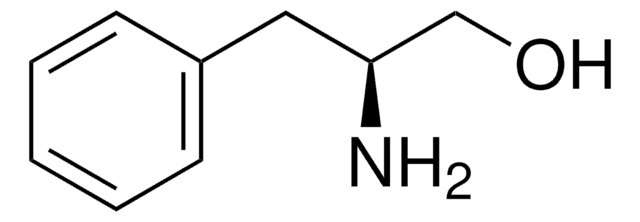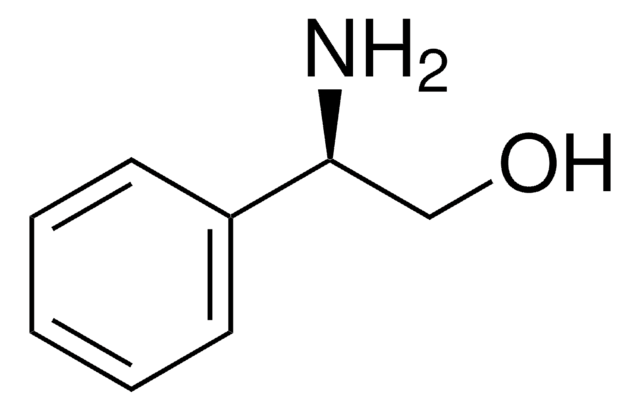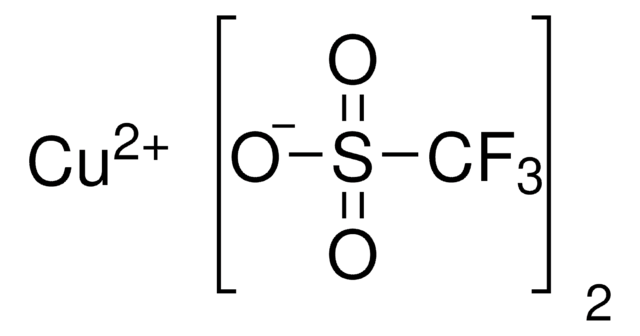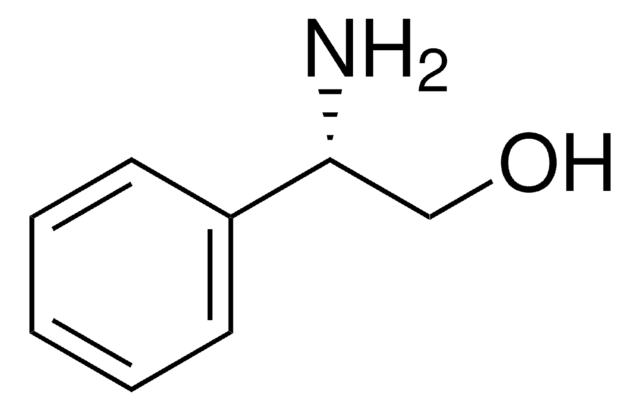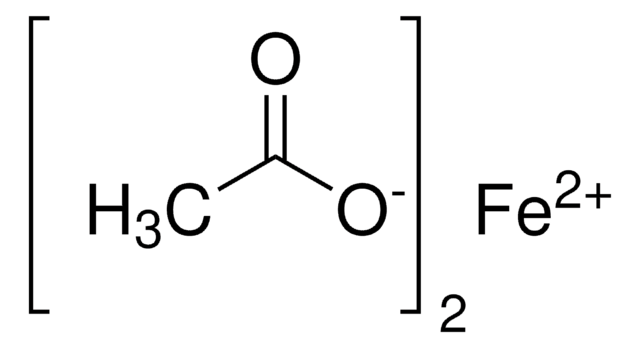추천 제품
Grade
for analytical purposes
vapor density
6.9 (vs air)
분석
98%
양식
powder or crystals
반응 적합성
reaction type: click chemistry
환경친화적 대안 제품 특성
Catalysis
Learn more about the Principles of Green Chemistry.
sustainability
Greener Alternative Product
환경친화적 대안 카테고리
, Aligned
SMILES string
CC(=O)O[Cu]OC(C)=O
InChI
1S/2C2H4O2.Cu/c2*1-2(3)4;/h2*1H3,(H,3,4);/q;;+2/p-2
InChI key
OPQARKPSCNTWTJ-UHFFFAOYSA-L
유사한 제품을 찾으십니까? 방문 제품 비교 안내
일반 설명
We are committed to bringing you Greener Alternative Products, which adhere to one or more of The 12 Principles of Greener Chemistry. This product has been enhanced for catalytic efficiency. Click here for more information.
Copper(II) acetate also known as cupric acetate, can be used as a catalyst in various processes in the field of greener chemistry. It is particularly useful in cross-coupling reactions, where it can promote the formation of carbon-carbon or carbon-heteroatom bonds, without the need for hazardous reagents or solvents
Copper(II) acetate also known as cupric acetate, can be used as a catalyst in various processes in the field of greener chemistry. It is particularly useful in cross-coupling reactions, where it can promote the formation of carbon-carbon or carbon-heteroatom bonds, without the need for hazardous reagents or solvents
애플리케이션
Catalyst for greener amine synthesis by reductive amination with hydrogen gas.
Copper-catalyzed reductive amination of aromatic and aliphatic ketones with anilines using environmental-friendly molecular hydrogen
Copper(II) acetate is used as a catalyst:
Copper-catalyzed reductive amination of aromatic and aliphatic ketones with anilines using environmental-friendly molecular hydrogen
Copper(II) acetate is used as a catalyst:
- In the N-arylation of α-amino esters with p-tolylboronic acid to synthesize biaryls via cross-coupling reactions
- In the the synthesis of substituted isoxazole derivatives
신호어
Danger
유해 및 위험 성명서
Hazard Classifications
Acute Tox. 4 Oral - Aquatic Acute 1 - Aquatic Chronic 2 - Eye Dam. 1 - Skin Corr. 1B
Storage Class Code
8B - Non-combustible corrosive hazardous materials
WGK
WGK 3
Flash Point (°F)
does not flash
Flash Point (°C)
does not flash
개인 보호 장비
dust mask type N95 (US), Eyeshields, Gloves
가장 최신 버전 중 하나를 선택하세요:
이미 열람한 고객
Cinthia da S Lisboa et al.
The Journal of organic chemistry, 76(13), 5264-5273 (2011-05-25)
The oxidative addition of anilines (2) with 1,4-naphthoquinone (3) to give N-aryl-2-amino-1,4-naphthoquinones (1) was found to be catalyzed by copper(II) acetate. In the absence of the catalyst, the reactions are slower and give lower yields with the formation of many
Hanmei Zheng et al.
The Journal of organic chemistry, 74(2), 943-945 (2008-12-11)
A novel copper-catalyzed protocol for the synthesis of carbinol derivatives has been developed. In the presence of copper(II) acetate and dppf, carbinol derivatives were prepared by the addition of arylboronic acids to aromatic aldehydes in good to excellent yields. Moreover
Catherine Bronner et al.
Inorganic chemistry, 49(19), 8659-8661 (2010-09-02)
Reaction of a heteroleptic cyclometalated iridium complex incorporating a carboxylic acid appended dipyrrin with copper acetate leads to the formation of a hexanuclear species with the paddlewheel structure.
Jaesook Yun et al.
Chemical communications (Cambridge, England), (41)(41), 5181-5183 (2005-10-18)
A new, air stable and well-defined carbene-copper(II) complex has been prepared, which is an efficient precatalyst for the 1,2- and 1,4-reduction of carbonyl compounds under hydrosilylation conditions.
Liang Li et al.
Organic letters, 14(13), 3506-3509 (2012-06-26)
New strategies for the oxidative cycloaddition of enones with enamines are developed. These cycloaddition reactions directly afford substituted aromatic amines, which are important in organic chemistry, in moderate to good yield. Cu(OAc)(2)/TFA is shown to be essential to achieve high
자사의 과학자팀은 생명 과학, 재료 과학, 화학 합성, 크로마토그래피, 분석 및 기타 많은 영역을 포함한 모든 과학 분야에 경험이 있습니다..
고객지원팀으로 연락바랍니다.